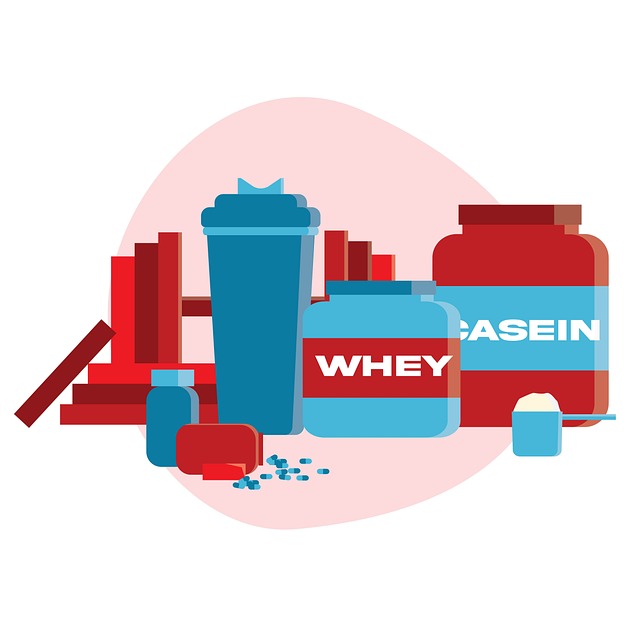Learn how to have an attractive and athletic body
Building an attractive and athletic physique is a goal shared by many people across India, yet achieving this transformation requires understanding the fundamentals of proper nutrition, exercise, and lifestyle habits. An athletic body isn't just about appearance—it represents strength, endurance, flexibility, and overall health that comes from consistent dedication to fitness and wellness practices.

How Can You Get in Shape Effectively?
Getting in shape involves creating a balanced approach that combines cardiovascular exercise, strength training, and flexibility work. Start with 150 minutes of moderate-intensity aerobic activity weekly, as recommended by health experts. This can include brisk walking, cycling, swimming, or dancing. Incorporate strength training exercises at least twice per week, focusing on major muscle groups including legs, chest, back, shoulders, and arms.
Progressive overload is key to building an athletic physique. Gradually increase the intensity, duration, or frequency of your workouts to continue challenging your body. Compound movements like squats, deadlifts, push-ups, and pull-ups work multiple muscle groups simultaneously, making them highly effective for developing functional strength and muscle definition.
What Methods Help You Lose Belly Fat?
Belly fat reduction requires a combination of overall fat loss through caloric deficit and targeted core strengthening exercises. Visceral fat, which accumulates around internal organs, responds well to regular aerobic exercise and dietary changes. High-intensity interval training (HIIT) has shown particular effectiveness in reducing abdominal fat while preserving lean muscle mass.
Core-strengthening exercises like planks, bicycle crunches, mountain climbers, and Russian twists help build the underlying abdominal muscles. However, spot reduction isn’t possible—you cannot lose fat from just one area. Focus on creating an overall caloric deficit through proper nutrition and regular exercise to see meaningful changes in your midsection.
How Does a Low Carb Diet Support Your Goals?
A low carb diet can be an effective tool for weight management and body composition improvement. By reducing carbohydrate intake to 20-50 grams per day, your body enters a metabolic state called ketosis, where it burns fat for fuel instead of glucose. This dietary approach often leads to rapid initial weight loss and improved insulin sensitivity.
Focus on consuming high-quality proteins like lean meats, fish, eggs, and dairy products, along with healthy fats from sources like avocados, nuts, and olive oil. Include plenty of non-starchy vegetables such as leafy greens, broccoli, cauliflower, and bell peppers to ensure adequate fiber and micronutrient intake. However, this dietary approach may not suit everyone, particularly those with certain medical conditions.
What Are Effective Strategies for Losing Weight for Women?
Women face unique challenges in weight loss due to hormonal fluctuations, metabolism differences, and body composition variations. Strength training is particularly important for women as it helps maintain bone density and prevents muscle loss during weight loss. Many women fear becoming “bulky” from lifting weights, but this is a common misconception—women typically lack sufficient testosterone to build large muscle mass.
Menstrual cycle considerations can affect energy levels and water retention. During the luteal phase, women may experience increased appetite and cravings. Planning workouts and meals around these natural fluctuations can improve success rates. Adequate protein intake becomes crucial, with recommendations of 0.8-1.2 grams per kilogram of body weight to support muscle maintenance and satiety.
Cost Considerations for Fitness Programs
Achieving an athletic body can involve various costs depending on your chosen approach. Gym memberships in Indian cities typically range from ₹1,500 to ₹8,000 per month, while personal training sessions cost ₹800 to ₹3,000 per session. Nutritionist consultations may range from ₹1,000 to ₹5,000 per session.
| Service Type | Provider Examples | Cost Estimation |
|---|---|---|
| Gym Membership | Gold’s Gym, Fitness First, Local gyms | ₹1,500 - ₹8,000/month |
| Personal Training | Certified trainers, Fitness centers | ₹800 - ₹3,000/session |
| Nutrition Consultation | Registered dietitians, Nutritionists | ₹1,000 - ₹5,000/session |
| Online Programs | MyFitnessPal, Healthifyme, Cult.fit | ₹500 - ₹2,000/month |
Prices, rates, or cost estimates mentioned in this article are based on the latest available information but may change over time. Independent research is advised before making financial decisions.
Creating an attractive and athletic body is a journey that requires patience, consistency, and realistic expectations. Success comes from establishing sustainable habits rather than pursuing quick fixes or extreme measures. Focus on making gradual improvements to your nutrition, exercise routine, and lifestyle choices. Remember that progress isn’t always linear—some weeks will show dramatic changes while others may seem stagnant, but consistency over time yields the best results for achieving and maintaining an athletic physique.
This article is for informational purposes only and should not be considered medical advice. Please consult a qualified healthcare professional for personalized guidance and treatment.




